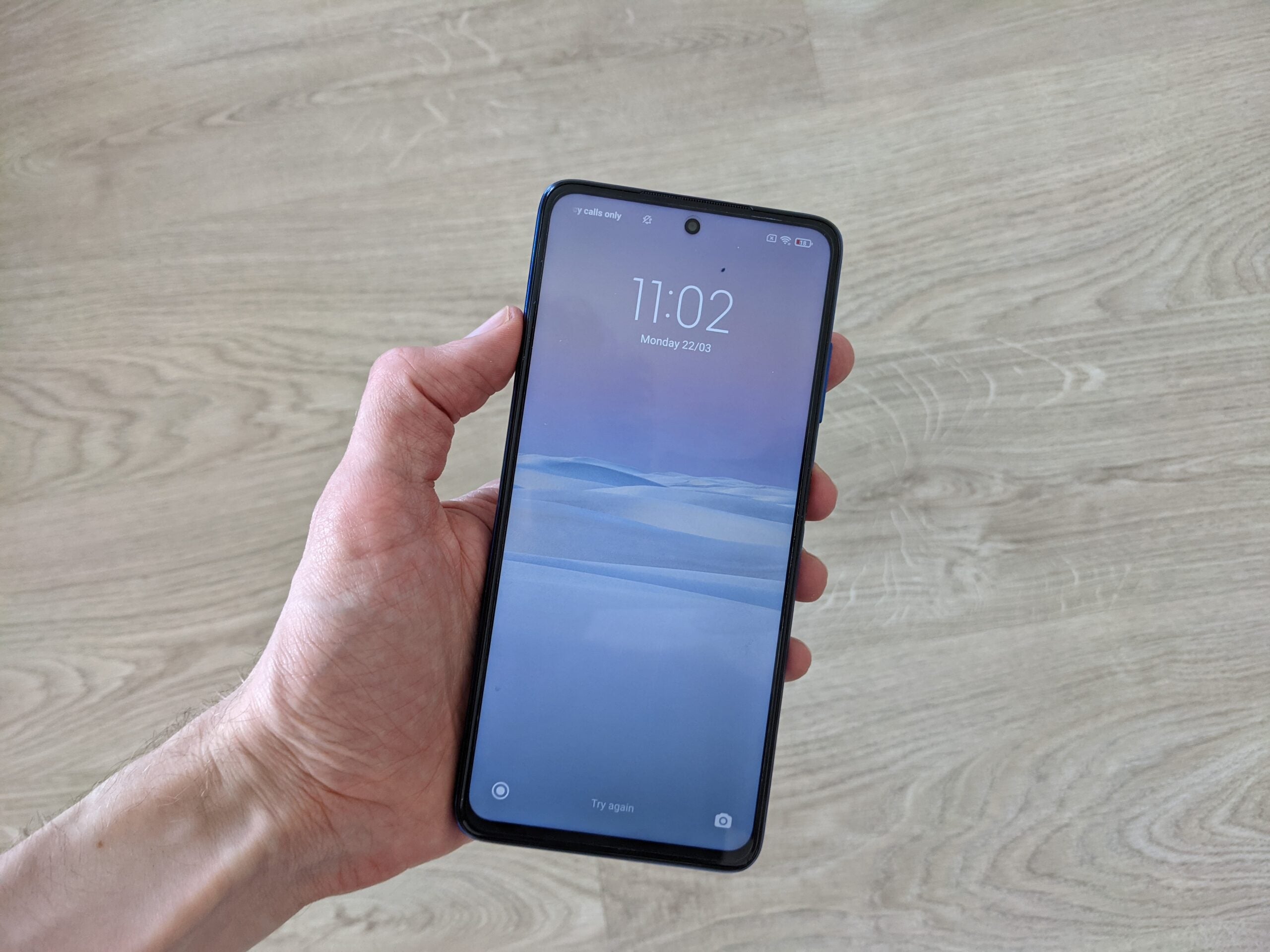Realme 8 5G Review
5G at all costs
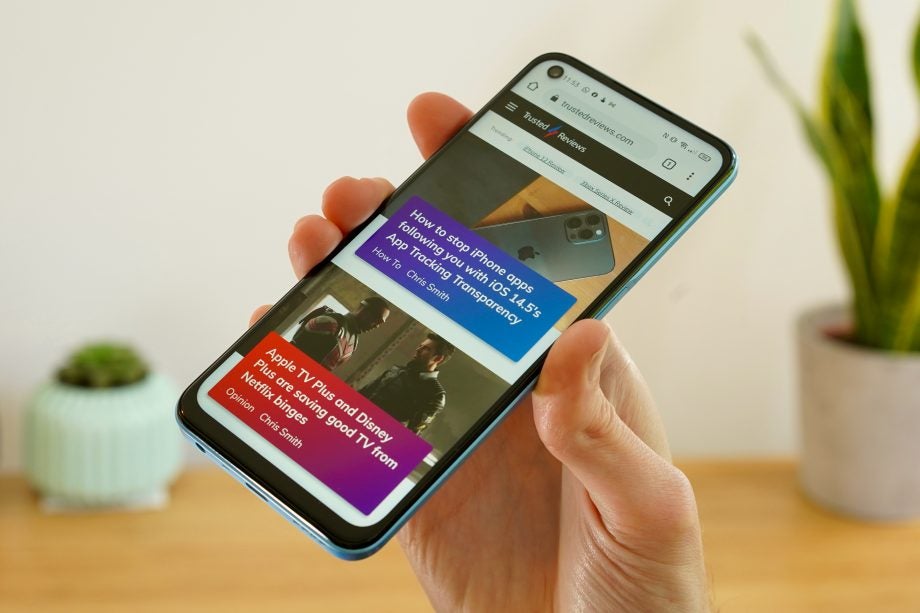
Verdict
The Realme 8 5G is a competently built budget phone, offering admirable stamina and, of course, 5G connectivity. Its 90Hz LCD screen is of adequate quality, and the phone’s performance is perfectly decent for everyday tasks.
Pros
- 5G connectivity on a budget
- Excellent stamina from 5000mAh battery
Cons
- Diminished performance
- No ultra-wide camera
- Screen not as good as previous model
Availability
- UKRRP: £199
- EuropeRRP: €179
Key Features
- Battery LifeThe big battery easily gets through the day
- 5GThis is one of the cheaper phones with 5G connectivity
Introduction
What price would you pay for 5G? That’s the burning question as we consider the Realme 8 5G – a new, budget contender that makes a few questionable compromises to deliver a speedy network connection and a low price.
Funnily enough, there’s a much stronger case to be made for the Realme 8 5G in the UK and in other Western markets. The brand’s key focus appears to be on India and Southeast Asia, where there’s precious little 5G infrastructure at present.
However, even here there’s a question over priorities. Is 5G connectivity more important to you in a best cheap phone than a properly rounded camera system, strong performance, and an optimal quality display? If so, then the Realme 8 5G might just be for you.
Prices start from £199 for 4GB of RAM and 64GB of storage, while the 6GB/128GB model costs £249. That entry model pricing is exactly the same as the equivalent (non-5G) Realme 8, while the higher model represents a £30 drop from last year’s equivalent Realme 7 5G. There’s no US pricing or likelihood of a release.
This presents a fairly unique dilemma: are you willing to sacrifice more than money for 5G connectivity?
Design and Screen
- Sturdy, if plain, all-plastic body
- Reliable side-mounted fingerprint sensor
- 6.5-inch 90Hz display
The Realme 8 5G press blurb goes to great pains to highlight how thoroughly the company has tested its latest design, from the buttons to the USB-C connector. It’s also been put through vigorous temperature and humidity trials.
I’m not sure how these processes compare to those of its budget rivals (or even those of the best mid-range phones), but this is undoubtedly one of the most solid-feeling budget phones I’ve used of late.
Both its matte rim and shiny rear are formed of plastic, but there’s little in the way of flex or creak. Combine this with a weight of 185g in an 8.5mm-thick body, and the Realme 8 5G offers sufficient heft and density to not feel especially cheap.
The handset comes sporting a pretty bare bones design, though; there are no distinctive flourishes in the vein of the Realme 7 5G’s split finish. Realme talks confusingly about some kind of movie-inspired “Dynamic Speed Light” finish that brings about “dynamic change of light when the phone is shaken,” but all I see is a device that’s shiny and slightly reflective, which makes it look similar to countless other budget phones.
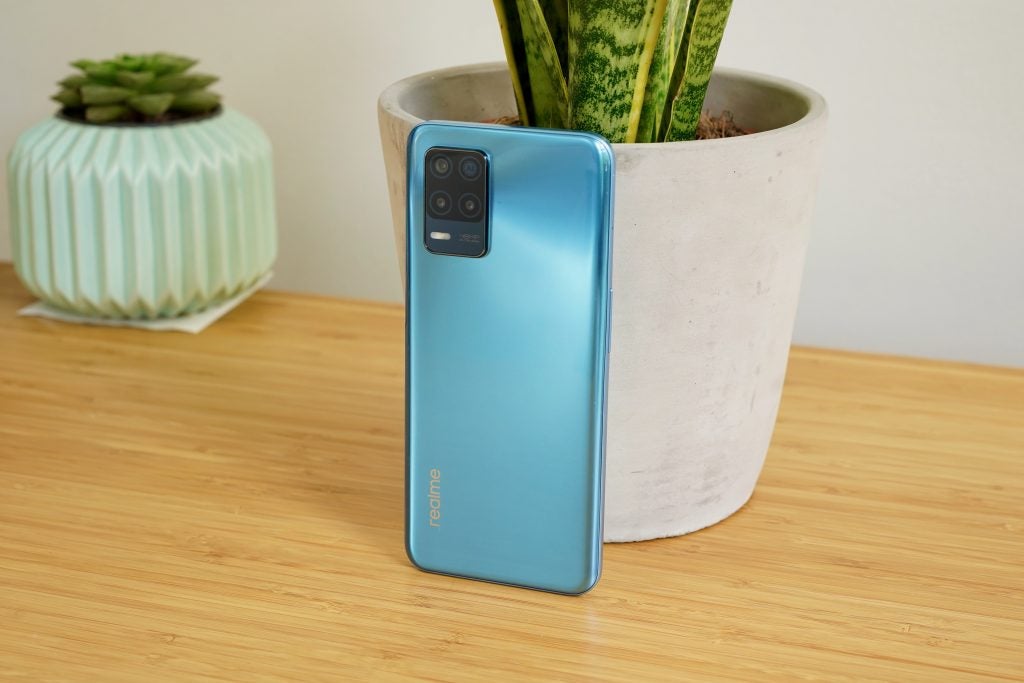
The right-hand edge of the phone is home to a fingerprint sensor housed within a flat power button. I’m pleased to see that this has been placed in a slight recess for easy sight-free access, unlike the Poco F3. I can also report that it’s super-fast and reliable, especially for a budget phone, and would happily take it over the Realme 8 Pro’s flaky in-display alternative.
Like last year’s Realme 7 5G, the Realme 8 5G features a 6.5-inch 2400 x 1080 FHD+ LCD screen. However, the refresh rate has been cut from 120Hz to 90Hz.
It’s true that 120Hz displays aren’t always all they’re cracked up to be if supported by modest hardware, but when you take into consideration the fact that the Realme 8 and the Realme 8 Pro feature AMOLED screens (albeit at 60Hz), you can’t help but feel that the Realme 8 5G could have offered more.
This is actually a decent LCD panel, with relatively vibrant colours (there are 16.7 million of the suckers) and a strong 600-nit peak brightness. A 180Hz touch sampling rate makes it suitably responsive, too.
But it’s neither as vibrant nor quite as fluid as other phones at this end of the market. The OnePlus Nord N10 5G makes a similar compromise – but the Poco X3 NFC is a great example of what can be achieved in the budget category when you don’t have a largely needless 5G millstone around your neck.
Camera
- 48MP camera fall short of rest of range
- No ultra-wide lens
- Poor video
Realme is making a big photographic push with its current Realme 8 range – but, once again, the Realme 8 5G feels like the runt of the litter.

For starters, you don’t get the Realme 8 Pro’s 108-megapixel main sensor here, nor even the Realme 8’s 64-megapixel downgrade. Rather, like the Realme 7 5G before it, the Realme 8 5G packs a 48-megapixel camera sensor with an f/1.8 aperture.
I was quite happy with the level of detail and balance in the shots taken outside in daylight hours. They weren’t overly garish, thanks to Realme’s appealingly naturalistic colour science.
However, as soon as the light drops, the noise starts to encroach. Night mode shots look surprisingly good when briefly previewed on the device itself, with a reasonable degree of brightening and pleasingly deep colours. Look at them in greater detail, or on a larger screen, and you’ll see a whole lot of grain and a distinct lack of clarity. The lack of OIS isn’t unusual in a budget phone, but it contributes to these less-than-ideal results. See the sample shots below for an idea of the picture quality.


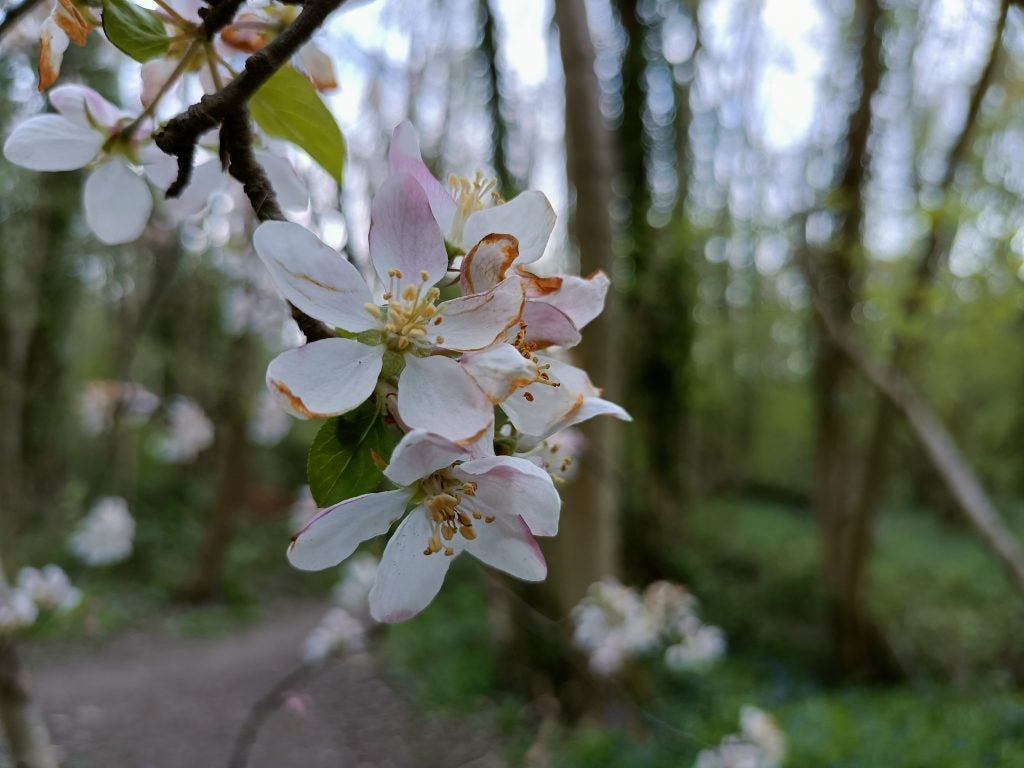
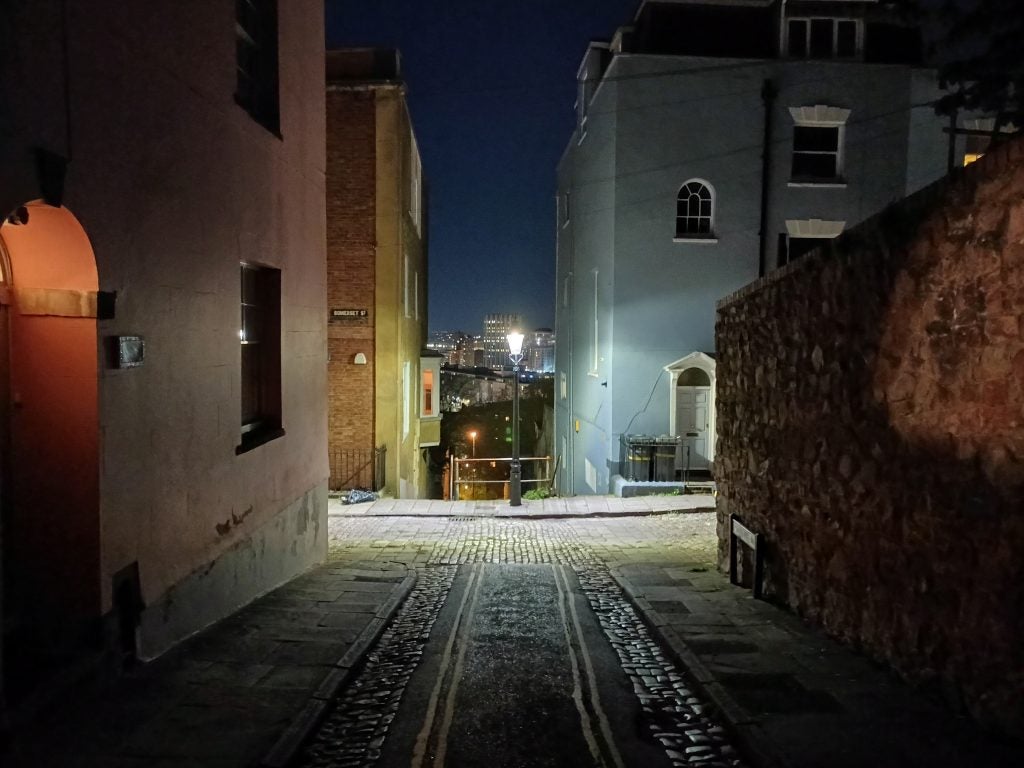
A far more noteworthy and regrettable absence is any form of ultra-wide sensor. It’s true that we criticised the Realme 8 Pro’s own ultra-wide camera, and that we haven’t met a sub-£300 phone with an ultra-wide that didn’t make us wince just a little. But not having one at all is a definite step back from the Realme 7 5G.
What you do get here is a pair of largely superfluous 2-megapixel assistant sensors, including a macro and a depth sensor. It shouldn’t surprise you to learn that the macro produces close-up shots (as close as 4cm) that are way too fuzzy to be of any real use or value.
The 16-megapixel selfie camera isn’t much cop either, producing noisier and more washed-out snaps compared to the main sensor – and with noticeable levels of overexposure. Skin tones also tend to be a little weird and rubbery.

A final dose of decline and mediocrity comes in the video department, with support for a mere 1080p/30fps. The Realme 7 5G supported 4K at 30fps and 1080p at 120fps. Even at its low price, this far from one of the best camera phones.
Performance
- A step down from the previous gen
- Capable CPU for general tasks, weak GPU for gaming
- Clean and fast UI with lots of bloatware
The Realme 8 5G utilises a Dimensity 700 5G processor, which is built to a 7nm production standard. Once again, it represents a roll back from the Realme 7 5G and its Dimensity 800U 5G, albeit a fairly modest one.
Together with 4, 6, or 8GB of RAM (our model has 8GB, but UK buyers won’t have that option), it’s sufficient for solid baseline performance when navigating through home screens and flicking between apps. Those apps don’t boot up as fluidly as more expensive phones, but I wouldn’t say the experience was especially slow.
I did find that some of the memory management could be a little aggressive, though. Having started the lengthy initial update of Genshin Impact, I flicked out to do a spot of WhatsApp message triaging, only to find after a time that the progress of the update had been halted.
The PCMark battery test that I ran also failed to retain its information when I came back to it, although I can’t say for certain whether that was a problem with the phone or the app itself. Either way, the lack of stickability proved annoying given the length of the test.
Going back to Genshin Impact, MiHoYo’s epic action-RPG defaults to Lowest and 30fps settings. While it’s perfectly playable, you won’t get the most stable frame rate even at these most humble of settings.
The much older and less visually opulent PUBG Mobile, on the other hand, loads up with HD resources, HD graphics and High Frame Rate by default. Those are all a clear notch above what you get with the most affordable phones on the market. Once booted up, the original Battle Royale game plays reasonably smoothly.
Benchmark tests reveal that the Realme 8 5G’s CPU is pretty competitive for the price. An average Geekbench 5 multi-core score of 1749 places the Realme 8 5G roughly level with the much-heralded Poco X3 NFC and its more mainstream Snapdragon 732G CPU, which scored 1769. It’s markedly faster than the Moto G9 Power with its Snapdragon 662 CPU, which scored 1379.
However, in the GFX suite of benchmark tests, the Realme 8 5G lagged behind the Poco X3 NFC by around 30%. If there’s a weakness to the Dimensity 700 5G, it’s seemingly in the GPU department.
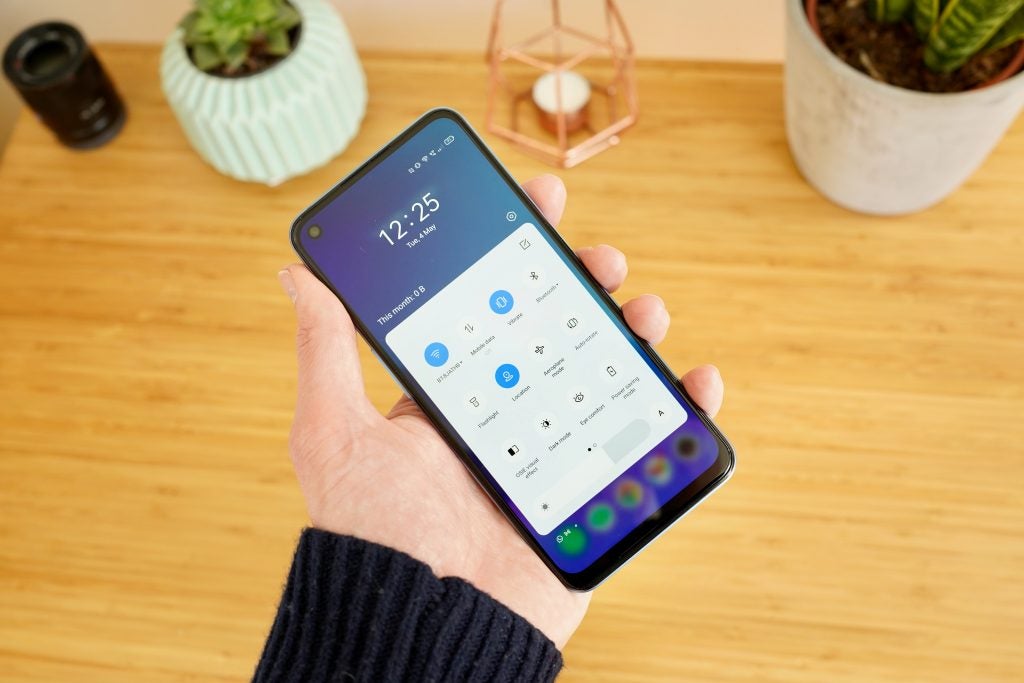
Essentially, you’re getting a phone that can run day-to-day tasks reasonably fluidly, but you won’t want to push it too far with the latest high-end games.
Realme UI 2.0 lends to this general feeling of fluidity. It still isn’t the ideal Android 11 skin, but it benefits from keeping things relatively smooth and uncluttered.
Its icons are crisp and round (at least by default), the Settings menu isn’t too fiddly to navigate, and Google Feed is situated to the left of the homescreen. In other words, it does the basic stuff well.
There’s a fair amount of bloat on my test device, but there are mitigating circumstances. This particular unit was intended for the Southeast Asian market, as evidenced by the presence of unfamiliar apps such as Lazada and WeTV.
But you also get more familiar pre-installed apps such as TikTok and Netflix, as well as a bevy of home-brewed efforts such as Soloop (a video editor), Realme Link (a smart device manager), and additional storefronts for both apps and themes. And it’s a cardinal sin to provide an additional web browser on top of Google Chrome, whatever the region.
Battery life
- Large 5000mAh battery
- Good for two days of light use
- 18w charging
The Realme 8 5G really is going all in on 5G as its defining feature. Which perhaps explains the reason the one component that hasn’t been scaled back from the Realme 7 5G is the battery.
At 5000mAh, it’s sizeable power pack alright, and one that’s evidently been included as a means to fuel those thirsty next-gen network speeds. Sadly, I wasn’t able to put that to the test, through a combination of lockdown living and patchy 5G availability in my area and on my network.
But in general terms, the Realme 8 5G’s stamina impresses. At the end of a 12-hour day of fairly heavy use, which entailed 5 hours of screen-on time, I was left with exactly 50% in the tank.
This means that the Realme 8 5G has the potential to go for a full two days between charges, if you don’t go too hard on the media.
Recharging is handled by a bundled 18W USB Type-C charger. That isn’t the fastest provision out there, with other budget manufacturers providing 33W bricks in the box.
Realme itself provides a 30W charger in the plain Realme 8, as it did in the Realme 7 5G. It’s another unfortunate roll back among many, but it isn’t calamitous in and of itself. Some flagship phones don’t even give you a charging brick, after all.
Conclusion
The Realme 8 5G is a competently built budget phone, offering admirable stamina and, of course, 5G connectivity.
Its 90Hz LCD screen is of adequate quality, and the phone’s performance is perfectly decent for everyday tasks.
However, Realme has had to make a series of cuts in order to hit an aggressive price point, and the result is the least appealing phone in the three-strong Realme 8 family.
Should you buy it?
You want a 5G phone on a budget: This is one of the cheaper 5G phones around and if access to the faster data speeds is a must then this will get the job done.
You want the best performing, feature-rich budget phone: The Realme 8 5G isn’t the best pick for gaming nor does it have the best screen at this price.
Verdict
The Realme 8 5G goes out of its way to provide 5G at a super-low price, but the resulting cuts take their toll. In terms of display, design, performance and camera, the phone lags behind the rest of the range, not to mention its rivals.
FAQs
There is no IP rating attached to this phone
No, there is no wireless charging support here
There’s both a 5G and a 4G version of the Realme 8

